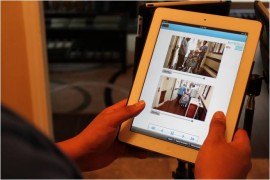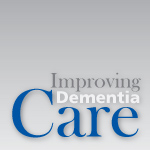
What if…
Corporate structure took a back seat?
Therapists were free to do their best work?
You were surrounded by amazing colleagues?
There were no excuses for mediocrity?
Would you build something great?

Corporate structure took a back seat?
Therapists were free to do their best work?
You were surrounded by amazing colleagues?
There were no excuses for mediocrity?
Would you build something great?
We are pleased to announce an outstanding open house held on April 10, 2013. We were very proud to show off our renovated patient rooms, bathrooms and new flooring. The building radiates a charming, attractive and clean atmosphere for our residents to reside in as they go through their rehabilitation process. The freshly painted walls and housewarming décor throughout the dining room, halls and sitting areas give residents as well as staff a comfortable living and working environment. Our new short-term rehabilitation wing boasts its own private dining room. Our open house gave us the opportunity to provide a tour to every single person who came to our Grand Opening.
well as staff a comfortable living and working environment. Our new short-term rehabilitation wing boasts its own private dining room. Our open house gave us the opportunity to provide a tour to every single person who came to our Grand Opening.
There was an outpouring of support from our local community, such as the McAllen Chamber of Commerce, which was present to perform our ribbon-cutting ceremony as well as the Mayor of McAllen, Richard Cortez. More than 200 guests honored us with their presence that evening, and we were delighted to provide a wonderful meal, live music, fantastic gifts, prizes and great drinks thanks to our generous sponsors: RGV Mobile X-Ray, Houston Medicine Chest, Legacy Hospice, Lone Star Bank and Pepper’s at Uptown.
Many of our guests included liaisons, nurses, therapists, physicians and key community people. They were so impressed with the upgrades and renovations of our facility.
Also noteworthy were our exemplary State Survey results in April, consisting of no clinical deficiencies and only two health deficiencies! It takes much dedication and ongoing passion from each employee to have these types of results.
One of our main goals is that we maintain the relationships we have with local area hospitals and physicians, but also reach physicians we’ve never worked with before. In the past month alone, 40 percent of our admissions came from home, but a few of those were referred to us by new physicians and/or their staff who attended our Grand Opening. We are seeing new referral sources and know that our Grand Opening had a significant part in those referrals.
In the past year, Grand Terrace has participated in many local community events such as Empty Bowl project and Fight Hunger & Feed Hope golf tournament with RGV Food Bank. In so doing, we are planting Grand Terrace seeds all over the Rio Grande Valley!
Grand Terrace could not have had the success it did without all the arduous work from our wonderful staff in each department. We thank them immensely for such a successful Grand Opening, and we rejoiced with them as we celebrated National Nursing Home Week in May of this year.
By Ludim Vasquez, C.O.T.A., Grand Terrace Health and Rehabilitation, McAllen, TX
 I am probably not alone in the summation that the world of physical therapy has drastically changed in the last several years or so. I may be biased, seeing as I work in one, but it seems to me that the setting that has felt the most impact of these changes has been in the skilled nursing facility (SNF) setting. Most noteworthy was the transition from the fee-for-service payment system to the prospective payment system; then most therapists grudgingly went through the transition from paper to more sophisticated computer documentation. Let’s not even get into the multitude of changes in the Medicare system itself, where the requirement for more objective and significant measures of progress is ever-growing. Because the predominant clientele of a SNF is usually medically highly involved — but less cognitively aware — elderly who at times require more sophisticated forms of encouragement, showing objective proofs of actual progress often can be difficult.
I am probably not alone in the summation that the world of physical therapy has drastically changed in the last several years or so. I may be biased, seeing as I work in one, but it seems to me that the setting that has felt the most impact of these changes has been in the skilled nursing facility (SNF) setting. Most noteworthy was the transition from the fee-for-service payment system to the prospective payment system; then most therapists grudgingly went through the transition from paper to more sophisticated computer documentation. Let’s not even get into the multitude of changes in the Medicare system itself, where the requirement for more objective and significant measures of progress is ever-growing. Because the predominant clientele of a SNF is usually medically highly involved — but less cognitively aware — elderly who at times require more sophisticated forms of encouragement, showing objective proofs of actual progress often can be difficult.
Even fellow healthcare providers and family members alike can sometimes question just how much progress the patient is making. As humans, the old adage that “seeing is believing” is a strong weapon to use to show that what we do as therapists is working and can be measured. The family member who lives in a different city and has not seen her mother walk for two years will question any therapist who tells her that Mom is now able to take five steps with a walker. The doctor who has been treating a patient he considers as bedbound and needs total assist for all ADLs will not believe that Mr. Smith is now able to feed himself with supervision. But what if there were a software application that a therapist could use to make this task of providing undeniable visual proof that a patient is making progress? Enter Kinesioplus software.
This simple mobile application actually originated to address the difficulties mentioned earlier: to help therapists show families and their respective doctors the very visual evidence that the patient is, indeed, making progress. As their website (www.Kinesioplus.com) offers, this user-friendly app “gives you the power of video imaging, reinforced with editing options to analyze ROM, input comments, or make circles and lines to correct identified errors during sessions. For objective analysis of movement, Kinesioplus also gives you the option of comparing videos side by side for easy comparison on week-by-week progress.”
In a nutshell, after getting the patient’s (or their responsible party’s) signed consent, you can videotape the patient using the app. The beauty of the software comes with what you do with the images you get. At first, you can use the original image to show the patient’s baseline, which in itself can be an eye-opener for the loved ones who have not seen the patient in weeks. And, yes, you can do a side-by-side comparison of how the patient performed a certain functional task on a weekly basis to show the progress. However, the saved image also can be used hours later to help the licensed therapist type up a more analytical report. By looking at a recorded image, the therapist may see something to address that may not have been as obvious, while the therapist was busy physically assisting the patient or providing verbal/tactile cues.
Taking treatment a step further, you can also videotape the patient as they perform their exercises to make a home exercise program (HEP) upon discharge. As most of us know, most patients need more than the two-dimensional paper that we often hand them when they leave the SNF. When we provide patients and their families with a video of the actual patient doing the exercise and hear his or her therapist providing the instructions, more often than not, they will remember the exercise better. Imagine a patient with Alzheimer’s who goes home and hears a favorite therapist telling her to work out versus a family member or caregiver giving her instructions to lift her leg up and down. In cases where the patient or family does not have the available technology to play the video at home, the images can be printed on paper with written instructions. And to use today’s high-speed technology even more, the images/exercises can be sent via email or text messages to any involved parties.
With the convenience of all these technological resources available to use with the app, the next question might naturally lead to privacy issues. Considering that the two founders/owners of this software application are a software engineer and physical therapist/Rehab Director of an SNF, these concerns were highly anticipated. According to the founders, their app is “compliant with HIPPA regulation. All access to the application and website are all secured with password unique to each user. All information inside the application is separated for each treating doctor. All therapists treating the patient can see all their information. Patients can also access their own progress report with a randomized password given to them for safe access. All information is encrypted to the fullest safeguarding of documents to comply with HIPPA regulations. Therapists will not be able to open the case of a patient if they haven’t signed the consent form provided before opening each case to protect the facility, the therapists and the patient for any misuse of the information.”
One can argue that a regular video camera/smartphone/handheld device can be used for the same purpose of showing the patient’s progress. Why does a therapist need this app to fulfill this goal? The founders argue that their mobile app “gives you the power of video imaging reinforced with editing options to analyze ROM, input comments, make circles and lines to correct identified errors during sessions. For objective analysis of movement, Kinesioplus also gives you the option of comparing videos side by side for easy comparison of week-by-week progress. This app also gives you the ability to share the client’s image with edited version of the video that can support home exercise programs or give a report to other clinicians or even for the client or client’s family to report progress. This app rivals the expensive applications, and it will give you the same analytical perspective at a very affordable price.”
The possibilities with Kinesioplus are exciting! We look forward to this application becoming available for our facilities soon.
By Lisette Maico-Tan, DPT, Brookfield Healthcare Center, Downey, CA
 On July 10th CMS hosted a National Provider Call that focused on the goal of improving dementia care in nursing homes. This National Partnership is focused on care that is person-centered, comprehensive, and interdisciplinary. During the call, care approaches that are person-centered and individualized were highlighted, and facility systems and tools to enhance care were discussed.
On July 10th CMS hosted a National Provider Call that focused on the goal of improving dementia care in nursing homes. This National Partnership is focused on care that is person-centered, comprehensive, and interdisciplinary. During the call, care approaches that are person-centered and individualized were highlighted, and facility systems and tools to enhance care were discussed.
Shari Ling, Deputy Chief Medical Officer at CMS, stated that the partnership promotes the 3 “R”s to providing quality dementia care:
Rethink – rethink our approaches to dementia care
Reconnect – reconnect with people using person-centered care approaches
Restore – restore good health and quality of life in nursing homes across the country
CMS will measure our success in making these critical changes during our survey process, and by measuring our use of psychotropic medications in persons with dementia. Dementia care and psychotropic use is sure to be a focus for our annual surveys as our industry raised the bar to provide a higher quality of care for this fragile population.
During this inspiring National Provider Call, Dr. Laura Gitlin, a researcher at John Hopkins University and the Director of the Center for Innovative Care on Aging, presented findings on the use of an OT driven treatment intervention called a Tailored Activity Program (TAP). Recent research has shown that the Tailored Activity Program was effective in reducing behavioral symptoms in persons with dementia. The process is very similar to what we have put into place in some of our facilities using our integrated cognitive care approaches. In the next edition of the Flag POST, we will be sharing how some of these integrated care programs are coming to life in our facilities as we work with our clinical partners to individualize the programs for each facility.
 FY2014 Medicare SNF Proposed Revisions are Limited
FY2014 Medicare SNF Proposed Revisions are Limited
The Centers for Medicare & Medicaid Services (CMS) released proposed rules for skilled nursing facilities (SNFs) that affect the documentation of Part A therapy treatment time. This policy revision proposal, effective Oct. 1, 2013, would require that distinct calendar days of treatment be recorded in the Minimum Data Set (MDS) in addition to the current requirement of treatment minutes.
For example: If a patient were a Rehab Medium with 150 minutes, but the dates of service were MWF with two disciplines treating three days, this would no longer meet the criteria. Services will have to occur over five separate days in the look-back. The scenario would need to be one discipline M/W/F and the other discipline M/Tu/Th. All other rehab categories currently run one discipline for at least five distinct calendar days in a look-back period.
For the coming fiscal year, CMS estimates that aggregate payments to SNFs will increase by about 1.4 percent, or $500 million, for Part A services. This figure is based on a market-based inflation increase and certain downward adjustments required by law. CMS also reports in the proposed rule that facilities in fiscal year (FY) 2012 reported a decrease in group therapy. ASHA predicted this reduction based on rules initiated Oct. 1, 2011, that penalized each resident’s group therapy minutes if fewer than four patients participated.
Background
SNF Part A is governed by a prospective payment system (PPS) and does not include Part B services for which patients qualify after exhausting their Part A benefit. Since 1998, only treatment minutes per week have been required in the MDS, which made enforcement of the requirements for therapy (three times per week or five times per week) difficult to verify without a tedious review of patient records. The day-of-service identification is expected to be implemented by a revision of the MDS form.
CMS continues to research potential alternatives to the existing methodology used to pay for therapy services rendered under SNF PPS. Payment rates are currently based on therapy provided to a patient during a seven-day look-back period. In the proposed rule, CMS announced contracts with Acumen, LLC, and the Brookings Institution to look at options for improving or replacing the current payment system. Comments on the existing payment methodology are welcomed by CMS at SNFTherapyPayments@cms.hhs.gov. CMS will be regularly updating the public on the progress of this project on the CMS website. The complete proposed rule appears in the May 6, 2013, Federal Register[PDF], with comments due July 1, 2013.
By Tamala Sammons, Therapy Resource